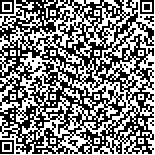| 引用本文: |
李展富,江姗姗,唐红,汪红娟,田浩梅.针刺调控脑缺血再灌注损伤大鼠海马区circRNAs表达的研究[J].湖南中医药大学学报,2023,43(3):519-527[点击复制] |
|
| |
|
|
| 本文已被:浏览 2218次 下载 1156次 |
| 针刺调控脑缺血再灌注损伤大鼠海马区circRNAs表达的研究 |
| 李展富,江姗姗,唐红,汪红娟,田浩梅 |
| (湖南中医药大学针灸推拿与康复学院, 湖南 长沙 410208) |
| 摘要: |
| 目的 探讨针刺调控脑缺血再灌注损伤大鼠缺血侧海马区circRNAs的表达,为针灸临床治疗脑缺血提供一定的实验理论依据。方法 24只健康成年雄性SD大鼠随机分为针刺组、模型组、假手术组,每组8只。使用线栓法制备大鼠大脑中动脉闭塞再灌注模型(middle cerebral artery occlusion/reper-fusion, MCAO/R),针刺组大鼠捆绑后,选取大椎、百会、人中穴进行针刺处理,每隔15 min行针1次,留针30 min,每间隔12 h进行1次,连续进行7次;模型组、假手术组只捆绑,不做其余处理。干预前及干预72 h后,行Garcia神经功能评分;干预72 h后,行脑TTC染色观察脑梗死面积比,采用circRNAs基因芯片检测缺血侧海马区circRNAs表达谱。结果 (1)干预前:与假手术组比较,针刺组、模型组大鼠神经功能缺损评分显著下降(P<0.01)。干预后:与假手术组比较,针刺组、模型组大鼠神经功能缺损评分显著下降、脑梗死面积比增加(P<0.01);与模型组比较,针刺组大鼠神经功能缺损评分升高、脑梗死面积比减少(P<0.05)。(2)circRNA芯片分析:模型组与假手术组比较,共有603个差异基因,其中下调circRNAs 315个、上调circRNAs 288个;针刺组与模型组比较,共有51个差异基因,其中下调circRNAs 18个、上调circRNAs 33个;共同调控的circRNAs有23个。模型组与假手术组比较,差异表达circRNAs功用表现为神经元间突触、细胞形态改变等方面的改变,通路主要归属于ErbB信号通路、MAPK信号通路、cAMP信号通路等;针刺组与模型组比较,差异表达circRNAs 功用表现为神经营养素结合、H3组蛋白乙酰转移酶复合物、逆行轴突运输等方面的改变,通路主要归属于MAPK信号通路、神经营养素信号通路、Hippo信号通路等。共同调控功用有神经元投射、蛋白质结合、神经系统发育等,共同调控的信号通路有MAPK信号通路。结论 针刺大椎、百会、人中穴能改善脑缺血再灌注损伤大鼠神经功能缺损评分,减少脑梗死面积比,其机制可能与调控多个circRNAs表达、激活多种功用和多条信号通路有关。 |
| 关键词: 针刺 脑缺血再灌注损伤 circRNAs 大椎 百会 人中 |
| DOI:10.3969/j.issn.1674-070X.2023.03.021 |
| 投稿时间:2022-07-18 |
| 基金项目:国家自然科学基金项目(81874508);国家自然科学基金项目(82274662);长沙市科技局自然科学基金项目(kq2014094);湖南省自然科学基金项目(2021JJ30490)。 |
|
| Effects of acupuncture on circRNAs expression in hippocampus of rats with cerebral ischemia-reperfusion injury |
| LI Zhanfu,JIANG Shanshan,TANG Hong,WANG Hongjuan,TIAN Haomei |
| (College of Acupuncture & Tuina and Rehabilitation, Hunan University of Chinese Medicine, Changsha, Hunan 410208, China) |
| Abstract: |
| Objective To explore the regulation of acupuncture on the expression of circRNAs in the ischemic hippocampus of rats with cerebral ischemia-reperfusion injury, so as to provide experimental theoretical basis for the treatment of cerebral ischemia with acupuncture. Methods Twenty four healthy adult male SD rats were randomized into acupuncture group, model group and sham-operated group, with 8 rats in each group. The middle cerebral artery occlusion/reperfusion (MCAO/R) model of rats was established by thread embolism. After the rats in the acupuncture group were bound, the points of Dazhui (GV14), Baihui (GV20) and Renzhong (GV26) were selected for acupuncture. The needles were manipulated every 15 min and were retained for 30 min. The treatment was performed every 12 h, 7 times in a row. The model group and the sham-operated group were only bound without any treatment. The neurological function was assessed by Garcia score before and 72 h after intervention. At 72 h after intervention, the area ratio of cerebral infarction was observed by TTC staining, and the expression profile of circRNAs in the ischemic hippocampus was detected by circRNAs gene chip. Results (1) Before intervention: Compared with the sham-operated group, the score of neurological function impairment in the acupuncture group and the model group dropped significantly (P<0.01). After intervention: Compared with sham-operated group, the score of neurological function impairment in the acupuncture group and the model group decreased significantly, whereas the area ratio of cerebral infarction increased (P<0.01). Compared with the model group, the score of neurological function impairment in the acupuncture group went up while the area ratio of cerebral infarction went down (P<0.05). (2) CircRNA chip analysis: Compared with the sham-operated group, there were 603 differential genes in the model group, including 315 down-regulated circRNAs and 288 up-regulated circRNAs. Compared with the model group, there were 51 differential genes in the acupuncture group, including 18 down-regulated circRNAs and 33 up-regulated circRNAs. There were 23 circRNAs under co-regulation. Compared with the sham-operated group, the function of the differentially expressed circRNAs showed changes in synapses between neurons and cell morphology, which were mainly attributed to ErbB signaling pathway, MAPK signaling pathway, cAMP signaling pathway, etc. Compared with the model group, the function of the differentially expressed circRNAs in the acupuncture group showed changes in neurotrophin binding, H3 histone acetyltransferase complex, and retrograde axonal transport, which were mainly involved in MAPK signaling pathway, neurotrophin signaling pathway, Hippo signaling pathway, etc. The functions of co-regulation include neuron projection, protein binding, nervous system development, etc. The signaling pathway of co-regulation includes MAPK signaling pathway. Conclusion Acupuncture at Dazhui (GV14), Baihui (GV20) and Renzhong (GV26) can improve the score of neurological function impairment and reduce the area ratio of cerebral infarction in rats with cerebral ischemia-reperfusion injury. The mechanism may be related to regulating the expression of multiple circRNAs, activating multiple functions and multiple signaling pathways. |
| Key words: acupuncture cerebral ischemia-reperfusion injury circRNAs Dazhui (GV14) Baihui (GV20) Renzhong (GV26) |
|

二维码(扫一下试试看!) |
|
|
|
|




